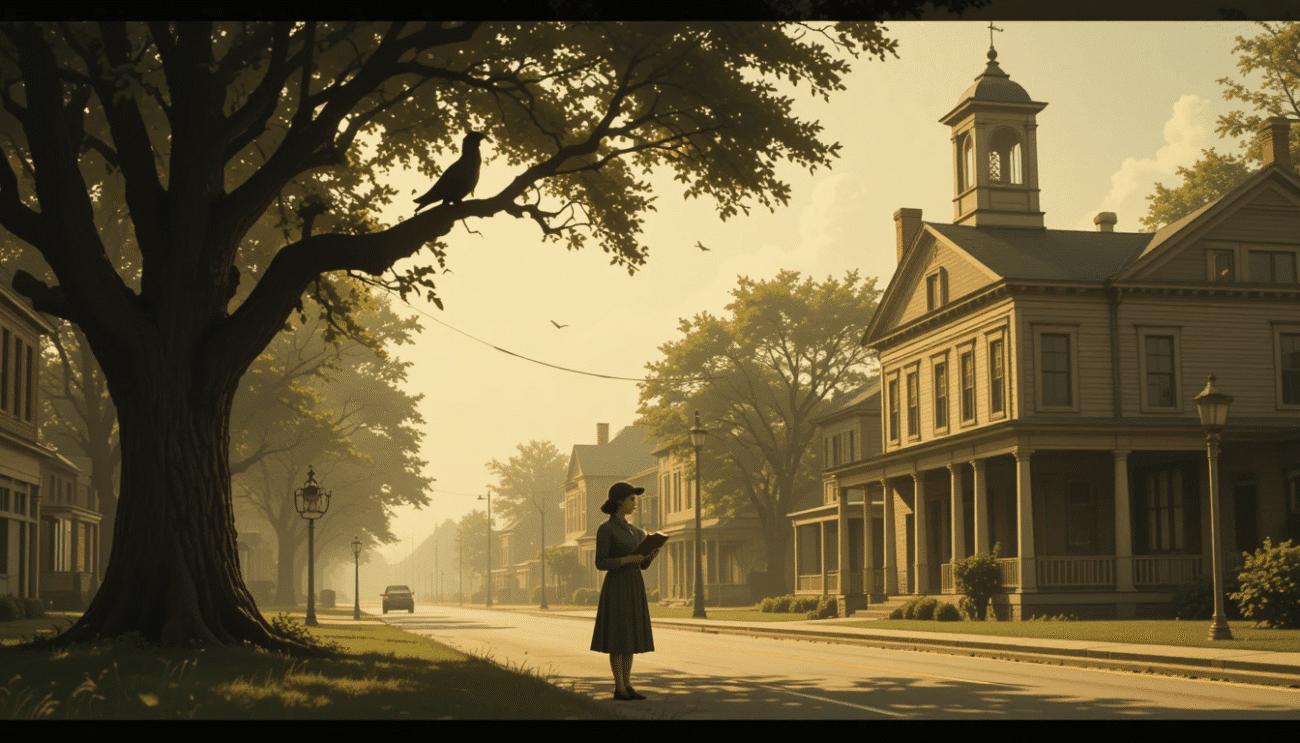Table of Contents
Plot Overview: A Snapshot of the Story
The Heart of Maycomb
*To Kill a Mockingbird* unfolds in Maycomb, Alabama, through the eyes of young Scout Finch. Alongside her brother Jem and friend Dill, Scout navigates childhood adventures while grappling with adult issues. Their father, Atticus Finch, a lawyer, defends Tom Robinson, a Black man falsely accused of rape. The trial exposes the town’s deep-seated prejudice, shaping Scout’s understanding of justice.
Key Events
The novel blends lighthearted moments with heavy themes. Scout and Jem’s fascination with their reclusive neighbor, Boo Radley, evolves into a lesson in empathy. The trial, a pivotal event, reveals the harsh realities of racism. Through Atticus’s moral courage, the children learn to confront injustice with integrity.
Tip: Focus on Scout’s perspective when reading—it highlights the novel’s blend of innocence and insight.
This book summary of *To Kill a Mockingbird* captures the story’s core: a child’s journey through a divided world, guided by compassion and truth.
Key Themes: Lessons That Resonate
Morality and Justice
At its core, *To Kill a Mockingbird* explores the struggle between right and wrong. Atticus teaches Scout and Jem to uphold justice, even when society resists. His defense of Tom Robinson embodies this principle, showing that moral courage often comes at a cost.
Empathy and Understanding
Atticus’s famous advice—“You never really understand a person until you climb into his skin”—drives the novel’s empathy theme. From Boo Radley’s misunderstood kindness to Tom’s unjust fate, the story urges readers to see beyond appearances.
- Racism: The novel exposes systemic prejudice in the Jim Crow South.
- Innocence: Scout’s growth reflects the loss of childhood naivety.
- Courage: Atticus and others display physical and moral bravery.
These themes make *To Kill a Mockingbird* a powerful read, relevant across generations.
Main Characters: Voices of Maycomb
Scout Finch
Scout, the novel’s spirited narrator, is a tomboy whose curiosity drives the story. Her evolving perspective on Maycomb’s injustices makes her a relatable lens for readers. Her voice brings humor and heart to this book summary of *To Kill a Mockingbird*.
Atticus Finch
Atticus, a widowed lawyer, is the moral backbone of the novel. His unwavering commitment to justice inspires readers. As a father, he imparts timeless lessons, earning him admiration worldwide.
| Character | Role | Key Trait |
|---|---|---|
| Jem Finch | Scout’s brother | Protective |
| Boo Radley | Reclusive neighbor | Kind |
| Tom Robinson | Accused man | Innocent |
Each character enriches the narrative, reflecting Maycomb’s complex social fabric.
Historical Context: The 1930s South
Jim Crow Era
Set during the Great Depression, *To Kill a Mockingbird* mirrors the Jim Crow South’s racial segregation. Laws enforced inequality, and Black individuals faced systemic injustice, as seen in Tom Robinson’s trial. This context grounds the novel’s themes in reality.
Social Dynamics
Maycomb’s hierarchy—divided by race, class, and family name—shapes the story. Harper Lee, drawing from her Alabama upbringing, crafts a vivid portrait of a divided society. Understanding this setting deepens the book summary of *To Kill a Mockingbird*.
For more historical insight, explore resources like the Library of Congress or PBS’s Scottsboro Boys documentary.
Did You Know? The novel’s trial draws inspiration from real cases, like the 1931 Scottsboro Boys trial.
FAQs About To Kill a Mockingbird
What is the main message of To Kill a Mockingbird?
The novel emphasizes empathy, justice, and moral courage. Through Atticus, it teaches readers to stand for what’s right, even against societal pressure.
Why is To Kill a Mockingbird controversial?
Its depiction of racism and use of racial slurs spark debate. Some schools ban it, while others praise its honest portrayal of history.
How does Scout change in To Kill a Mockingbird?
Scout matures from a naive child to a compassionate young girl, learning to see the world through others’ perspectives.
What inspired Harper Lee to write To Kill a Mockingbird?
Lee drew from her childhood in Alabama and events like the Scottsboro Boys trial, blending personal and historical influences.
Is To Kill a Mockingbird based on a true story?
While fictional, the novel reflects real-life issues of racism and injustice in the 1930s South, inspired by Lee’s observations.
Conclusion: Why It Matters Today
*To Kill a Mockingbird* remains a literary gem, weaving empathy, justice, and courage into a compelling narrative. This book summary of *To Kill a Mockingbird* highlights its key elements: Scout’s coming-of-age, Atticus’s moral stand, and the stark realities of prejudice. Its lessons resonate in today’s discussions on equality and compassion. Whether you’re a student, educator, or book enthusiast, revisiting this classic offers fresh insights. Dive into the novel, share your thoughts in book clubs, or explore related resources to deepen your understanding. Let Harper Lee’s masterpiece inspire you to see the world with empathy and act with integrity.
